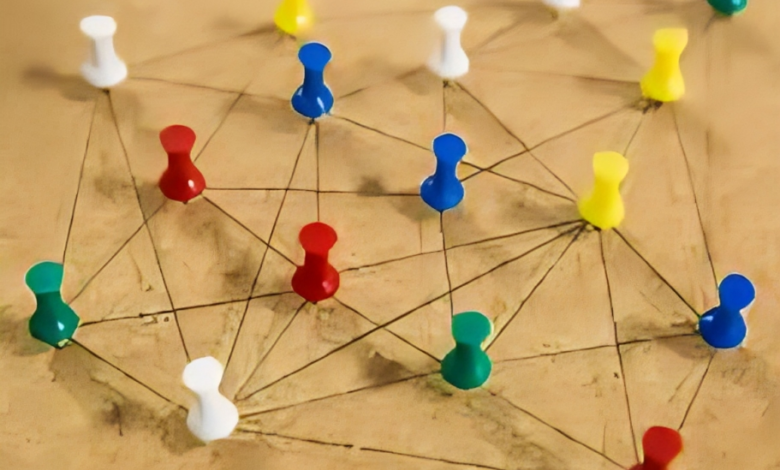Mastering Connections Hint A Guide to Building Meaningful Relationships and Networking Smarter

In today’s fast-paced digital age, building strong connections is crucial for personal and professional growth. Whether you’re navigating the business world, fostering friendships, or simply trying to expand your network, understanding how to connect with people effectively can make a massive difference. But connecting doesn’t just mean having someone’s contact info; it’s about creating genuine, lasting relationships. Here, we’ll explore practical tips, the importance of “connections hint” (or subtle clues for making meaningful connections), and how to use them to improve your social and professional life.
1. Understanding Connections Hint: What Does it Mean?
A “connections hint” is a subtle strategy, an indication, or a social cue that can help guide you toward building a solid connection with others. These hints could be observed in someone’s body language, tone of voice, the subjects they’re interested in, or even their choice of words. By picking up on these cues and responding effectively, you can create a comfortable environment for conversation and establish a foundation for a meaningful relationship. Recognizing and acting on these hints can distinguish a surface-level interaction from a genuine connection.
Key Takeaway: Being attuned to connections hint helps bridge gaps, creates rapport, and enhances communication, fostering trust and mutual understanding.
2. Why Connections Matter: The Power of Networking and Relationships
Networking often conjures up images of business cards and corporate events. However, it is far more than that. Having a strong network can help open doors to new opportunities, broaden your knowledge, and provide support in times of need. These connections become invaluable, particularly when they’re built on shared trust and mutual respect.
Key Benefits of Strong Connections:
- Career Growth: Many job opportunities arise through referrals or direct recommendations from people within your network.
- Personal Development: Relationships expose you to new ideas, perspectives, and experiences.
- Mental and Emotional Support: Genuine connections provide emotional backing and offer a sense of belonging and validation.
Investing time in understanding and acting on connections hint amplifies these benefits, creating a foundation that supports both professional and personal aspects of life.
3. How to Recognize Connections Hints: Practical Tips
Learning how to recognize and act on connections hint is an art. Here are some practical tips:
a. Observe Body Language
Non-verbal cues are often more telling than words. People might lean in closer when they’re interested, maintain eye contact to show attentiveness, or use open body language when they’re comfortable. Similarly, crossed arms, lack of eye contact, or turning away might signal discomfort or disinterest.
b. Listen Actively
Active listening is one of the most powerful tools in recognizing connections hint. When someone is speaking, focus on what they’re saying, acknowledge their words with nods or affirmations, and avoid interrupting. This simple act shows respect and interest, which often leads to a deeper bond.
c. Pay Attention to Shared Interests
Common ground often strengthens a connection. When someone mentions an interest or passion, engage with it. For example, if a colleague mentions a love for hiking, share your experiences if you’re also a hiking enthusiast, or ask them questions if you’re curious.
d. Look for Mirroring Behavior
People often mimic each other’s body language subconsciously when they feel a connection. If someone is mirroring your gestures, posture, or tone, it could be a sign they feel comfortable around you. Responding to this can help deepen the bond.
4. Building Connections: Tips for Creating Lasting Relationships
a. Be Authentic and Show Empathy
Authenticity is the key to building strong connections. Trying to impress someone by pretending to be someone you’re not is transparent and often creates superficial bonds. Instead, be yourself, be empathetic, and show genuine interest in others’ thoughts and feelings.
b. Practice Emotional Intelligence
Emotional intelligence (EQ) is the ability to understand, use, and manage emotions in a positive way. It involves recognizing your own feelings and those of others, allowing you to navigate social situations smoothly. By practicing empathy, self-regulation, and adaptability, you’re more likely to form meaningful connections.
c. Communicate Effectively
Effective communication goes beyond just words; it’s about expressing yourself clearly and responding thoughtfully. When you communicate effectively, you avoid misunderstandings and create an open space for others to feel heard.
Tip: Be mindful of your tone, especially in written communication, where emotional cues like facial expressions and tone of voice are absent. Being respectful and clear can make a big difference.
5. Using Connections Hints in Professional Networking
In a professional setting, connections hint can be extremely useful. Knowing when and how to approach a conversation, how to engage with a potential mentor or partner, and how to leave a positive impression are all crucial skills in networking.
a. Research Common Interests Before Meetings
Before going into a networking event or a meeting, research the individuals you’ll be meeting. Find commonalities through LinkedIn, social media, or their professional bio. This allows you to bring up shared interests naturally, making it easier to build rapport.
b. Balance Talking and Listening
It’s easy to dominate a conversation, especially if you’re enthusiastic. However, connections are strengthened when there’s a balance between speaking and listening. Aim to let others speak as much as you do, and genuinely listen to what they have to say.
c. Follow Up
Following up is essential in professional networking, but it shouldn’t feel transactional. Send a thoughtful follow-up email after a meeting or event, referring to specific details from your conversation. This shows you paid attention and care about continuing the connection.
6. Strengthening Connections Hint for Social Media Networking
Social media has become an essential networking tool. With platforms like LinkedIn, Facebook, and Twitter, connecting with people from across the globe is easier than ever. However, it also requires finesse and understanding of connections hint.
a. Personalize Connection Requests
When reaching out to someone online, avoid generic messages. Instead, send a personalized message explaining why you’d like to connect. Referencing a shared connection, experience, or interest increases the likelihood of a positive response.
b. Engage Meaningfully
After connecting with someone, engage with their posts, share insights, or comment thoughtfully. This signals genuine interest and helps build a rapport.
c. Be Mindful of Timing
Timing matters. If someone posts during business hours or on a specific day, it might be a professional-related post. However, posts shared in personal time might indicate a more relaxed, personal tone. Understanding these timings helps in deciding how to respond appropriately.
7. Maintaining Long-Term Connections: Keeping Relationships Alive
The key to networking isn’t just creating new connections but nurturing existing ones. Here are ways to keep relationships strong over time:
a. Reach Out Regularly
People appreciate it when others remember them, even if there’s no immediate gain. Send a quick message to check in, wish someone on special occasions, or share something you think they’d find interesting.
b. Offer Help and Be Resourceful
A network functions best when there’s give and take. Offer help when possible, share resources, or make introductions that might benefit your connection. This selfless approach often comes back to you in a positive way.
c. Attend Networking Events Together
If you’re attending a conference or an event, consider inviting someone from your network. This gives you both an opportunity to strengthen your bond while meeting new people together.
Conclusion
Mastering the art of recognizing and acting on connections hint can elevate both personal and professional relationships. While each person has their own unique social style, the fundamentals of building connections remain consistent: authenticity, empathy, and active engagement.
Networking becomes truly impactful when you shift from a transactional mindset to one focused on genuine connection. So next time you meet someone new or engage with someone you know, pay attention to these hints, listen more than you speak, and remember that even the smallest gesture can foster a strong, meaningful connection.




